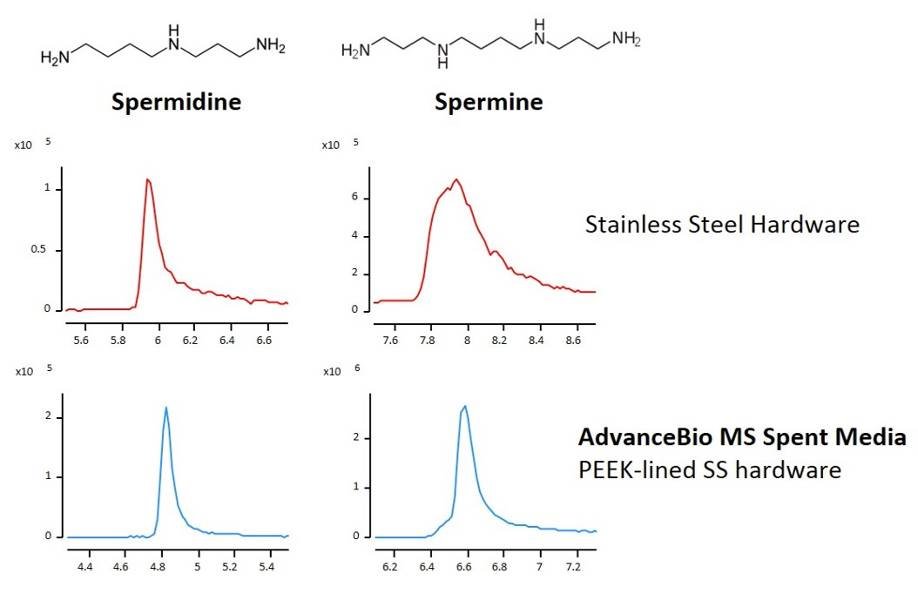In this post, learn how to successfully monitor "sticky" metabolites with a stainless steel LC.
Of the analytes that you can monitor with HILIC separations, amino acids are fairly straightforward. Aside from cysteine, they’re pretty stable. They’re zwitterionic, so either positive- or negative-ion mode mass spectrometry will readily detect them. Especially relevant to today’s topic, they don’t have the structural properties that make analytes “sticky.” Polyamines, small organic acids, and phosphate-containing compounds are examples of these sticky molecules.
Minimizing metals in the flowpath – both in solution and metal surfaces – can improve peak shape and recovery, and therefore sensitivity, for these tough metabolites. Everything from the solvent bottles to the point of detection is a detail that can influence how well these compounds are detected. Today I’ll share some steps to minimize metal in the system; perhaps in another post we’ll tackle exactly how metals can hinder these measurements.
One big step to eliminate metal from the separation is to use a BioInert LC rather than a standard, stainless steel-based system. The chromatograms below depict various phosphate-containing compounds and show the dramatic difference made by changing the flowpath from all stainless steel to “half and half” (BioInert LC with stainless steel capillaries) to completely inert. While changing instrumentation is certainly a big step, you can see that the difference in the data is dramatic. For a long-term project, the investment would be worthwhile.
Another step to minimize metals in the flow patch is in the LC column hardware. Many columns are packed in stainless steel hardware, but there are a variety of other options on the market, including glass, PEEK, and more recently PEEK-lined stainless steel. PEEK-lined stainless steel offers the benefit of an inert surface with the physical strength of stainless steel hardware. The next set of chromatograms shows the difference that inert column hardware can make in the peak shape of a pair of extremely “sticky” polyamines. Both columns have the same zwitterionic HILIC packing material, but packed into either stainless steel hardware or PEEK-lined stainless steel hardware. Sharper peaks mean both better resolution and better sensitivity.
Lastly, all hope is not lost if all you have is a standard, stainless steel-based LC. You can make modest improvements by replacing as many metal capillaries as possible with PEEK and by replacing glass solvent bottles with plastic ones. With care, it’s possible to deactivate the surfaces of your LC system to improve detection of polar metabolites. Next time we’ll cover how, but for now I’ll leave you with this peek at the improvements that can be made.
Talk to you soon!
Anne
Keywords: Bio columns, liquid chromatography, tips and tricks, HILIC, spent media analysis, AdvanceBio blog



